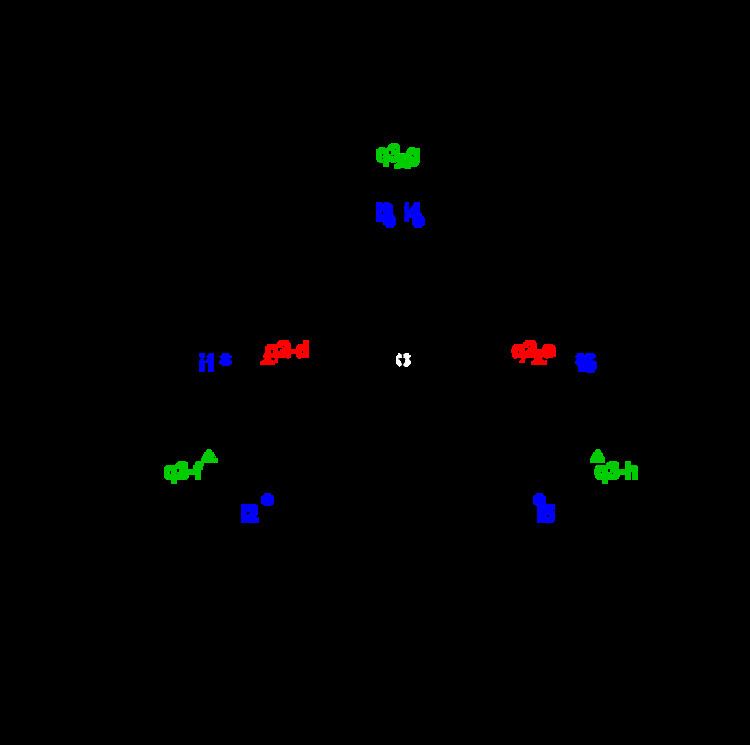 | ||
In statistics, the relationship square is a graphical representation for use in the factorial analysis of a table individuals x variables. This representation completes classical representations provided by principal component analysis (PCA) or multiple correspondence analysis (MCA), namely those of individuals, of quantitative variables (correlation circle) and of the categories of qualitative variables (at the centroid of the individuals who possess them). It is especially important in factor analysis of mixed data (FAMD) and in multiple factor analysis (MFA).
Contents
Definition of relationship square in the MCA frame
The first interest of the relationship square is to represent the variables themselves, not their categories, which is all the more valuable as there are many variables. For this, we calculate for each qualitative variable
Thus, to each factorial plane, we can associate a representation of qualitative variables themselves. Their coordinates being between 0 and 1 , the variables appear in the square having as vertices the points (0,0), ( 0,1), (1,0) and (1,1).
Example in MCA
Six individuals (
Applied to these data, the MCA function included in the R Package FactoMineR provides to the classical graph in Figure 1.
The relationship square (Figure 2) makes easier the reading of the classic factorial plane. It indicates that:
All this is visible on the classic graphic but not so clearly. The role of the relationship square is first to assist in reading a conventional graphic. This is precious when the variables are numerous and possess numerous coordinates.
Extensions
This representation may be supplemented with those of quantitative variables, the coordinates of the latter being the square of correlation coefficients (and not of correlation ratios). Thus, the second advantage of the relationship square lies in the ability to represent simultaneously quantitative and qualitative variables.
The relationship square can be constructed from any factorial analysis of a table individuals x variables. In particular, it is (or should be) used systematically:
An extension of this graphic to groups of variables (how to represent a group of variables by a single point ?) is used in Multiple Factor Analysis (MFA)
History
The idea of representing the qualitative variables themselves by a point (and not the categories) is due to Brigitte Escofier. The graphic as it is used now has been introduced by Brigitte Escofier and Jérôme Pagès in the framework of multiple factor analysis
Conclusion
In MCA, the relationship square provides a synthetic view of the connections between mixed variables, all the more valuable as there are many variables having many categories.This representation iscan be useful in any factorial analysis when there are numerous mixed variables, active and/or supplementary.
